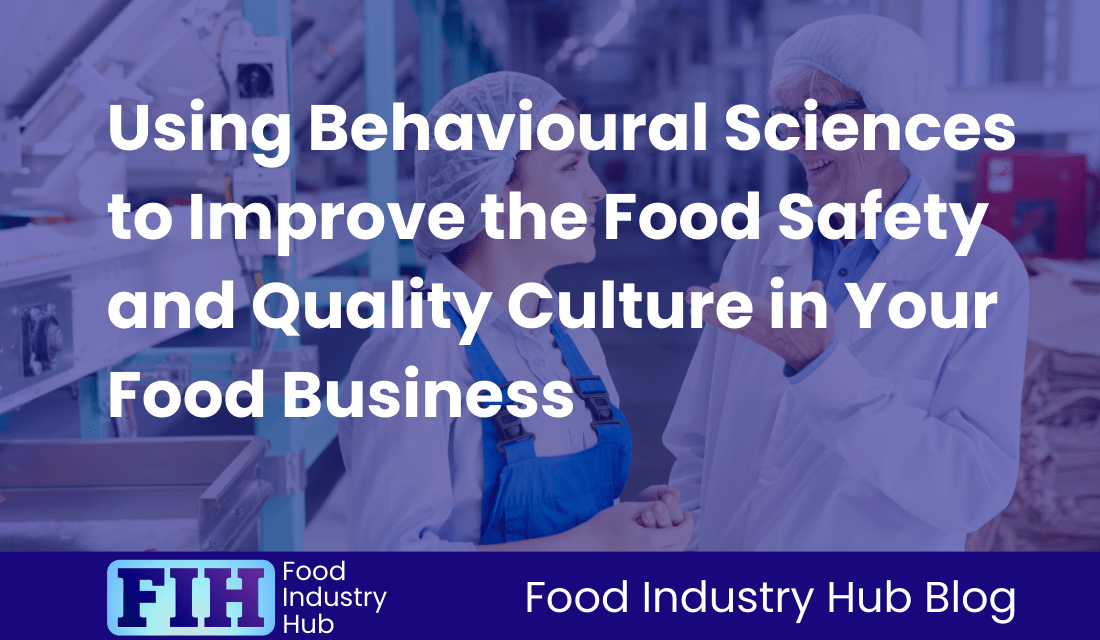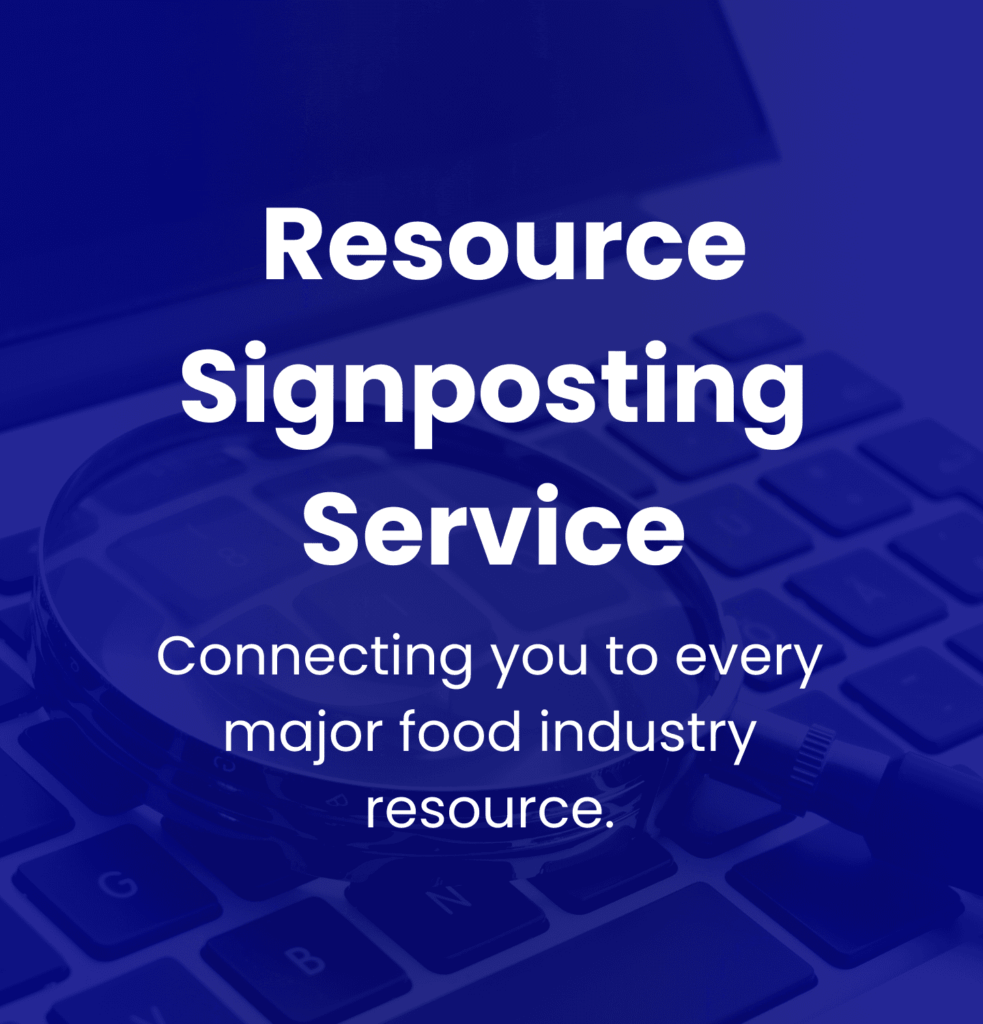Introduction
In thinking about the food safety and quality culture within your organisation, have you ever considered the impact of behavioural sciences?
Imagine the potential of tapping into human behaviour patterns to create a workplace environment that naturally gravitates towards best practices and excellence. By exploring the intersection of psychology and food safety, intriguing insights and strategies emerge that could revolutionise how your team approaches quality assurance. The fusion of behavioural sciences with food safety and quality culture development holds a key to unlocking untapped potential within your workforce.
This post is part of a collection we’ve put together to explore the topic of food safety and quality culture, and you can explore the topic in more detail by browsing the related content.
Table of Contents
Key Takeaways
- Behavioural sciences help us to understand human behaviour and decision-making. Using insights from behavioural sciences can better enable intentional culture change in favour of food safety and quality.
- Heuristics, biases, and inherent tendencies will influence behaviour and choices
- Behavioural economics is an application of behavioural sciences, which is often used for insights into consumer decision-making and quality perception.
- Behavioural sciences and the discipline of behavioural economics both transfer readily into the pursuit of food safety and quality culture maturity.
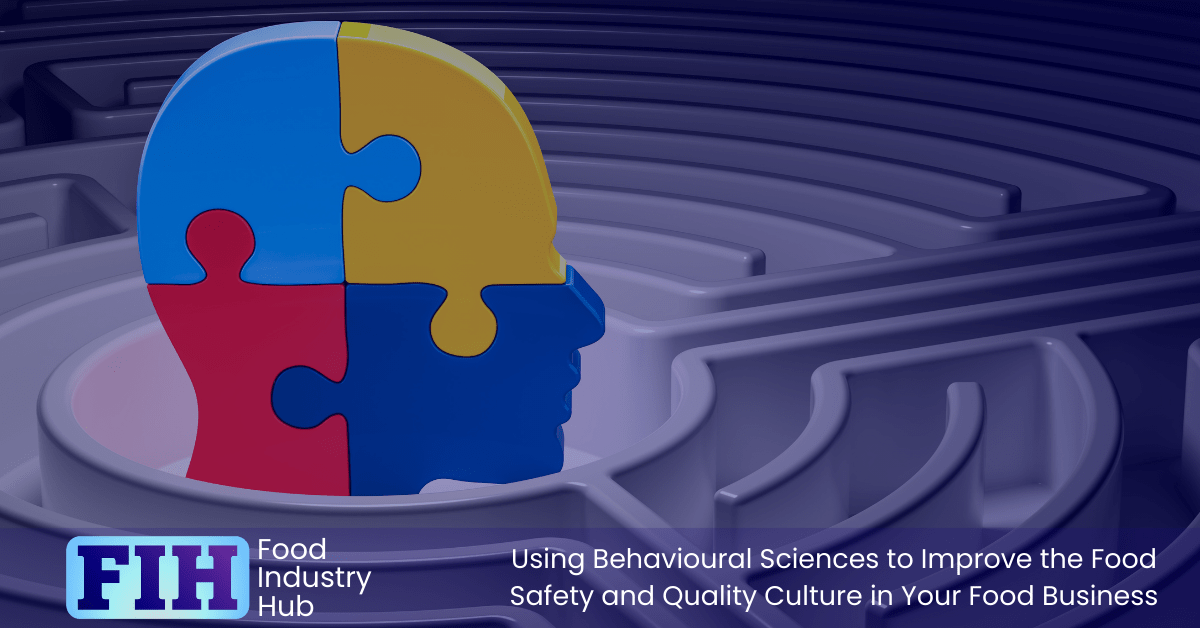
Applications of Behavioural Sciences for Food Safety and Quality Culture Development
In thinking about the food safety and quality culture within your organisation, have you ever considered the impact of behavioural sciences?
Imagine the potential of tapping into human behaviour patterns to create a workplace environment that naturally gravitates towards best practices and excellence. By exploring the intersection of psychology and food safety, intriguing insights and strategies emerge that could revolutionise how your team approaches quality assurance. The fusion of behavioural sciences with food safety and quality culture development holds a key to unlocking untapped potential within your workforce.
- Enhance culture by understanding human behaviour and motivation.
- Address root causes of unsafe practices through targeted interventions.
- Foster open communication, trust, and accountability.
- Design engaging training programs based on behavioural insights.
- Nudge employees towards safer practices and quality behaviours.
What Is Behavioural Science?
Behavioural science involves exploring how individuals’ actions, thoughts, and emotions influence their decision-making processes. It delves into the study of human behaviour, aiming to comprehend why people act the way they do in various situations. By analysing patterns and tendencies, behavioural science sheds light on the factors that drive individuals to make specific choices.
Behavioural science encompasses a range of disciplines, including psychology, sociology, and economics. It seeks to uncover the underlying motivations behind human behaviour, considering both conscious and subconscious influences.
Through experiments and observations, researchers can identify cognitive biases, social norms, and environmental cues that impact decision-making.
How Can Behavioural Sciences Be Used for Company Culture Development?
Behavioural sciences can offer some really useful insights in shaping company culture by providing frameworks around employee motivation and decision-making processes. Understanding the psychological factors that drive employee behaviour allows organisations to design strategies that foster a positive and productive work environment. By applying principles from behavioural economics, psychology, and sociology, companies can cultivate a culture that promotes food safety and quality standards.
For example, one way behavioural sciences can be used for company culture development is through the implementation of nudges. Nudges are subtle interventions that influence behaviour without restricting choices. In the same way that placing healthy food options at eye level in the cafeteria can encourage employees to make better food choices, nudging can be used to subtly influence choices in favour of food safety and quality outcomes.
What Advantages Can Behavioural Sciences Bring for Food Safety and Quality Culture?
By incorporating principles from behavioural sciences, such as understanding human behaviour, decision-making processes, and motivation, companies can create a more robust food safety and quality culture.
Behavioural sciences provide a deeper understanding of why employees may engage in unsafe food handling practices or overlook quality control measures. This knowledge allows organisations to implement targeted interventions that address root causes and encourage positive behavioural changes.
Behavioural sciences can help in creating a culture of continuous improvement by fostering open communication, trust, and accountability among team members. By leveraging behavioural insights, companies can design training programs that resonate with employees, making learning more effective and engaging.
Further, by applying behavioural economics principles, organisations can nudge employees towards safer practices and quality-centric behaviours, leading to a sustainable culture of food safety and quality within the workplace.
Ultimately, the advantages of incorporating behavioural sciences in food safety and quality culture development are clear: improved compliance, reduced risks, and enhanced overall organisational performance.

Key Concepts and Theories from Behavioural Sciences for Food Safety and Quality Culture Development
By delving into the intricate workings of human decision-making, perception, and motivation, a whole new realm of strategies emerges to cultivate a culture that prioritises adherence to safety protocols and quality standards. The exploration of cognitive biases, social dynamics, and framing techniques opens up a world of possibilities for fostering a culture that goes beyond mere compliance. So, how can behavioural sciences revolutionise your approach to food safety and quality within your organisation?
- Apply prospect theory to understand how losses and gains influence decision-making in food safety.
- Address biases like confirmation bias and availability heuristic in quality control practices.
- Encourage long-term thinking to overcome time inconsistency in adherence to safety protocols.
- Leverage social preferences to promote collective adoption of best food safety practices.
- Utilise framing effects to enhance attitudes towards safety protocols and quality standards.
Bounded Rationality
Bounded rationality refers to the idea that individuals make decisions based on limited information and cognitive abilities.
Definition
Decision-making is constrained by cognitive limitations and environmental factors. In essence, individuals don’t always make decisions based on a comprehensive analysis of all available information due to these constraints.
Bounded rationality acknowledges that people often rely on simplified mental shortcuts and heuristics when faced with complex choices. These shortcuts can lead to biases and errors in judgment, impacting the quality of decisions made.
Bounded rationality highlights that employees within an organisation may not always make optimal decisions regarding food safety and quality due to these inherent limitations.
How Bounded Rationality Could Be Used for Food Safety and Quality Culture Improvements
When applied to food safety and quality culture improvements, bounded rationality can help organisations understand the constraints and biases that influence decision-making processes.
By recognising that individuals may not always have all the information or cognitive abilities to make perfectly rational decisions, organisations can implement strategies to mitigate risks and improve overall food safety and quality practices.
For example, providing clear guidelines, training programs, and decision-making tools can help employees make more informed choices when it comes to food safety and quality.
Incorporating bounded rationality principles into organisational culture can foster a sense of awareness and mindfulness among employees. By acknowledging the limitations of human cognition, organisations can promote a culture of continuous learning and improvement, ultimately leading to enhanced food safety practices and a stronger quality culture.
Sign-up for the Food Industry Hub Mail Service
We regularly produce new content for food industry professionals, and the Food Industry Hub Mail Service is the best way to stay up to date with the latest additions.
Signup today to be added to the Food Industry Hub mailing list.
Prospect Theory
You may have heard of Prospect Theory before, but do you know how it could benefit food safety and quality culture?
Let’s explore its definition and how it can be applied to make significant improvements in ensuring food safety standards and fostering a culture of quality within organisations.
Definition
Prospect Theory explores how individuals make decisions under uncertainty. Developed by Daniel Kahneman and Amos Tversky in 1979, Prospect Theory suggests that people don’t always make rational choices based on expected utility theory.
Instead, individuals tend to weigh potential losses and gains differently, often being more sensitive to losses than gains. This asymmetry in decision-making can significantly impact food safety practices and quality culture within an organisation.
Prospect Theory introduces the idea of reference points, where individuals evaluate outcomes based on a reference rather than absolute values. This concept is crucial in understanding how people perceive risks and benefits related to food safety measures and quality standards.
How Prospect Theory Could Be Used for Food Safety and Quality Culture Improvements
Understanding Prospect Theory allows organisations to tailor interventions that align with human decision-making tendencies, enhancing food safety practices and quality culture.
Prospect Theory suggests that individuals make decisions based on potential losses and gains rather than on final outcomes. By applying this theory to food safety and quality culture improvements, organisations can design strategies that resonate with how people perceive risks and rewards.
For instance, framing food safety protocols as measures to prevent potential losses (such as foodborne illnesses or reputation damage) can motivate employees to adhere to guidelines more consistently.
Prospect Theory highlights the significance of communication in shaping perceptions. Organisations can leverage this by emphasising the positive outcomes of following food safety practices, thereby increasing compliance among staff.
By understanding how individuals evaluate risks and rewards, companies can implement targeted training programs, incentive structures, and communication strategies that promote a strong food safety and quality culture.
Ultimately, integrating Prospect Theory into organisational practices can lead to more effective and sustainable improvements in food safety and quality standards.
Heuristics and Biases
Heuristics are mental shortcuts that help in decision-making, while biases are systematic errors in judgment.
Understanding how these cognitive processes influence behaviours can help in enhancing food safety practices and fostering a culture of quality within an organisation.
Definition
Heuristics are mental shortcuts or rules of thumb that individuals unconsciously use to make decisions or solve problems more quickly. In the realm of food safety and quality culture, heuristics can influence how employees assess risks, leading to potential oversights or errors in judgment.
On the other hand, biases refer to systematic errors in thinking that can affect decision-making processes. Biases can skew perceptions, evaluations, and choices, impacting the overall culture of an organisation regarding food safety and quality.
Understanding these concepts is crucial for organisations aiming to improve their food safety and quality culture. By recognising the role heuristics and biases play in shaping behaviours and decisions, companies can develop targeted strategies to mitigate their negative effects.
Through awareness and education, employees can learn to recognise and counteract these cognitive tendencies, fostering a culture of heightened awareness and improved decision-making in matters of food safety and quality.
How Heuristics and Biases Could Be Used for Food Safety and Quality Culture Improvements
Heuristics, which are mental shortcuts or rules of thumb, can be leveraged to simplify decision-making processes related to food safety protocols. Establishing simple and low-friction heuristics that people routinely adopt can help to guide behaviours in favour of food safety and quality – simply by avoiding incentives that would prompt people to reevaluate those behaviours.
By understanding common biases such as confirmation bias, where individuals seek out information confirming their preconceptions, organisations can design training programs that challenge these biases and promote a more objective approach to quality control.
Sometimes, heuristics and biases can intersect. The availability heuristic, which involves making decisions based on readily available information (rather than engaging further research to challenge the available information), can be used to prioritise food safety measures by highlighting recent incidents or near-misses. By acknowledging this bias, companies can proactively address potential risks before they escalate.
Additionally, anchoring bias, where individuals rely too heavily on the first piece of information encountered, can be mitigated through regular reassessment of food safety procedures to prevent complacency. This would be best accomplished by changing the order in which information is presented with each reassessment.
Incorporating an awareness of heuristics and biases into food safety and quality culture initiatives fosters a more vigilant and proactive approach to maintaining high standards within the organisation.
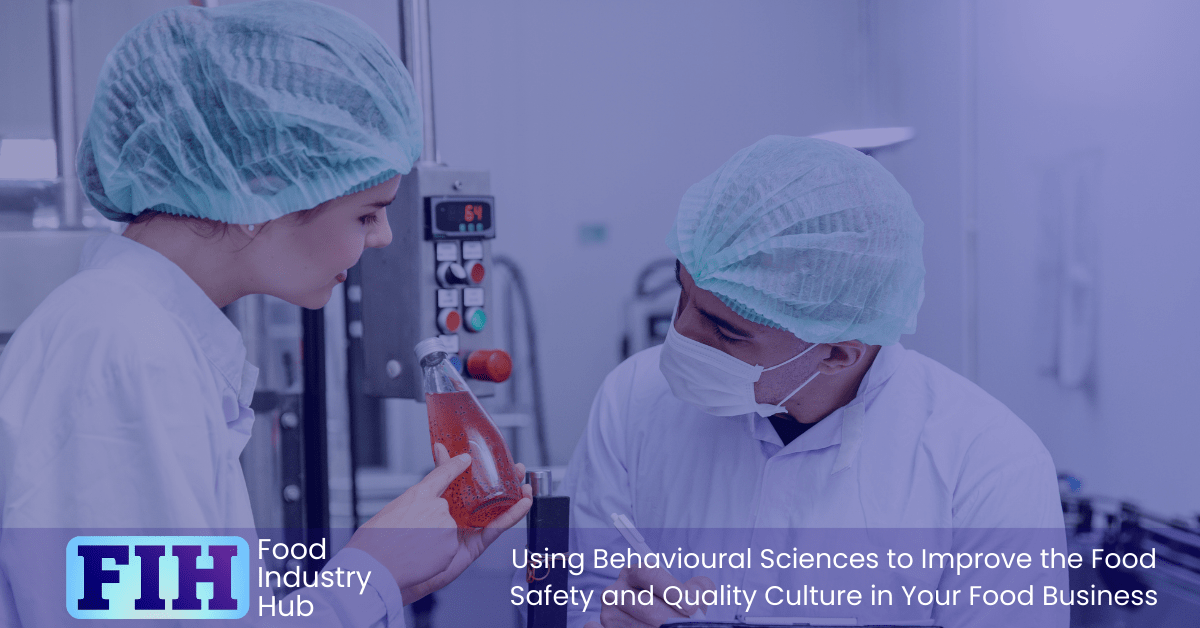
Time Inconsistency
Time inconsistency refers to the tendency to value immediate rewards more than future benefits, impacting decision-making processes.
Understanding how time inconsistency influences behaviour can help implement strategies to encourage long-term thinking and improve food safety practices.
Definition
Understanding the concept of time inconsistency in relation to food safety and quality culture development is crucial for identifying potential challenges and implementing effective strategies. Time inconsistency leads individuals to make decisions based on short-term benefits, even if they contradict long-term goals.
In the context of food safety and quality culture, this can manifest as prioritising immediate convenience over adherence to food safety protocols, leading to increased risks of contamination or quality issues.
Recognising time inconsistency is essential for organisations aiming to foster a strong food safety and quality culture. By acknowledging this phenomenon, businesses can tailor their approaches to training, communication, and incentives to align with human behaviour tendencies.
In essence, defining time inconsistency within the realm of food safety and quality culture sheds light on the psychological factors influencing decision-making processes. By acknowledging and addressing these tendencies, organisations can work towards creating a culture where long-term safety and quality objectives are consistently prioritised over short-term gains.
How Time Inconsistency Could Be Used for Food Safety and Quality Culture Improvements
Time inconsistency refers to the tendency for individuals to have a preference for immediate rewards over larger, delayed rewards, even where the delayed option is objectively better. Understanding this concept can help improve food safety practices and foster a culture of quality within an organisation.
To account for time inconsistency for food safety and quality culture improvements, consider implementing strategies that offer immediate incentives or feedback for following proper procedures. For instance, providing instant recognition or rewards for employees who adhere to safety protocols can reinforce positive behaviours. Additionally, creating systems that offer immediate consequences for non-compliance can help deter risky behaviours.
Leveraging time inconsistency can be beneficial in training and reinforcement programs by incorporating frequent and timely reminders of best practices. By delivering information in a way that aligns with individuals’ natural need for immediate gratification, organisations can enhance knowledge retention and promote a culture of continuous improvement in food safety and quality practices.
Social Preferences
You may wonder what social preferences entail and how they could positively impact food safety and quality culture.
Understanding social preferences involves recognising the influence of social interactions, norms, and relationships on decision-making processes.
Definition
Social preferences refer to the ways individuals prioritise and make decisions based on social factors rather than purely individual interests. These preferences are influenced by societal norms, cultural values, and the desire for social approval or acceptance.
Social preferences play a significant role in influencing collective actions and attitudes towards food handling practices, hygiene standards, and overall quality control measures. By recognising and leveraging social preferences effectively, organisations can promote a culture where individuals prioritise safe food practices not just for personal gain but for the benefit of the larger group.
This shift towards a shared social norm can lead to improved compliance, communication, and collaboration, ultimately enhancing food safety and quality outcomes.
How Social Preferences Could Be Used for Food Safety and Quality Culture Improvements
Social preferences in food safety and quality culture improvements can be harnessed to encourage collective adoption of best practices. By understanding social norms and values within a team, you can tailor food safety initiatives to align with what’s important to individuals.
For example, highlighting how following proper food handling procedures not only protects personal health but also contributes to the well-being of the entire community can resonate with people’s sense of responsibility towards others.
Encouraging influential team members to endorse and model adherence to food safety guidelines can significantly impact the behaviour of others. People are often influenced by those they trust and admire, making it crucial to tap into these relationships to foster a culture of food safety and quality.

Framing Effects
Let’s talk about framing effects in the context of food safety and quality culture. Understanding how framing influences decision-making can lead to significant improvements in these areas.
Definition
How do framing effects influence perceptions and decision-making in the context of food safety and quality culture development?
Framing effects refer to the way information is presented, which can impact how individuals perceive and make decisions about a particular situation. In the realm of food safety and quality culture, framing effects can play a significant role in shaping attitudes towards compliance with safety protocols, adherence to quality standards, and overall organisational culture.
When information about food safety and quality practices is framed positively, highlighting the benefits of following guidelines and standards, individuals may be more inclined to embrace and internalise these practices.
Conversely, framing the same information in a negative light, emphasising the risks and consequences of non-compliance, could evoke a sense of urgency and importance among individuals.
How Framing Effects Could Be Used for Food Safety and Quality Culture Improvements
To leverage framing effects effectively for food safety and quality culture improvements, consider how different presentations of information can influence attitudes and behaviours within an organisation. Framing effects involve presenting information in a way that can shape perceptions and inclinations.
For instance, framing food safety guidelines as essential for protecting consumers rather than just meeting regulatory requirements can enhance employee commitment to following protocols diligently. By framing quality control measures as integral to maintaining the reputation and trust of the brand, employees may better understand the importance of adherence to stringent quality standards.
Framing messages positively by focusing on the benefits of complying with safety and quality protocols rather than the consequences of non-compliance can foster a more proactive approach among staff. Highlighting success stories resulting from adherence to food safety practices can inspire a culture of continuous improvement and excellence within the organisation.

Using Behavioural Economics for Food Safety and Quality Culture Development
By understanding how human behaviours can be influenced and altered through strategic interventions, organisations can unlock new pathways to instil a mindset of excellence in their workforce. Imagine the possibilities of shaping attitudes and actions towards food safety through subtle yet effective nudges and incentives. The potential for creating a workplace where best practices are not just followed but embraced is indeed intriguing.
- Introduce default options guiding employees towards safer choices.
- Use incentives to reinforce adherence to safety standards.
- Showcase social proof to motivate employees in following best practices.
- Encourage personal goals and commitments for long-term success.
- Optimise workspace design to enhance food safety culture.
Nudging Desired Behaviours
Let’s talk about how default options and choice architecture can influence behaviours positively for food safety and quality culture.
Default options can guide individuals towards safer choices without restricting their freedom, while choice architecture can strategically present options to encourage desired behaviours.
Default Options
To guide individuals towards desired behaviours, implementing default options can be an effective strategy in shaping decision-making processes beneficial for food safety and quality culture development.
Default options are pre-selected choices that individuals automatically adopt if no alternative is specified. Setting default options in favour of food safety and quality ideals can significantly influence behaviour.
For example, in a food preparation setting, making hand sanitisers the default option visible and easily accessible can encourage staff to regularly sanitise their hands, thus promoting a culture of cleanliness.
Similarly, establishing default options that prioritise quality standards can guide employees towards making quality-centric decisions. For instance, defaulting computer systems to prompt quality checks before proceeding to the next production phase can embed a quality-focused mindset among workers – which works even if those quality checks aren’t procedurally mandatory.
Choice Architecture
With choice architecture, you strategically design the decision-making environment to nudge individuals towards desired behaviours without restricting their freedom of choice. By understanding how people make decisions, you can structure the options available to guide them towards making choices that align with food safety and quality ideals.
This can be achieved by highlighting certain choices, making them more prominent, or framing them in a way that encourages the preferred outcome.
For example, in a food processing facility, you can arrange the workspace to make it easier for employees to follow proper hygiene practices by placing hand sanitisers at key points or providing visual cues for correct procedures. By subtly influencing the environment, you can prompt employees to adopt behaviours that contribute to a culture of food safety and quality.
Choice architecture is a powerful tool in shaping behaviour without imposing strict rules. By leveraging insights from behavioural economics, you can create an environment that nudges individuals towards making choices that uphold food safety and quality standards.

Incentives and Rewards
When it comes to fostering a culture of food safety and quality, incentives and rewards play a crucial role. Positive reinforcement can motivate employees to consistently adhere to best practices, ensuring the highest standards are met.
Understanding loss aversion can help design incentive programs that effectively encourage staff to prioritise food safety and quality by taking advantage of that cognitive bias – leading to a greater influence over behaviour.
Positive Reinforcement
By implementing a system that recognises and rewards employees for their adherence to food safety protocols and commitment to quality standards, you can significantly enhance compliance and overall performance.
When employees receive incentives such as bonuses, recognition, or even simple gestures of appreciation for consistently following food safety procedures and maintaining quality standards, they’re more likely to feel motivated and valued. This positive reinforcement not only boosts morale but also reinforces the importance of adherence to food safety procedures in their daily practices.
Rewards can serve as a powerful tool for encouraging continuous improvement and innovation in food safety and quality processes. Employees who are incentivised to contribute ideas for enhancing safety measures and quality control are more likely to actively engage in creating a culture of excellence within the organisation.
Loss Aversion
Implementing strategies that leverage loss aversion through incentives and rewards can be a powerful driver for promoting adherence to food safety protocols and quality standards within an organisation. By tapping into individuals’ aversion to losses, you can create a strong motivation for employees to comply with safety procedures and maintain high-quality practices.
Offering incentives such as bonuses, recognition, or even small rewards for consistently following protocols can help instil a sense of accountability and responsibility among staff.
When employees understand that there are potential losses associated with not following safety guidelines, they’re more likely to prioritise compliance. Providing rewards for proper food handling, sanitation practices, and quality control measures reinforces the importance of these actions and encourages employees to uphold these standards consistently.
Social Norms and Peer Influence
Peer influence plays a significant role in shaping attitudes and actions within an organisation.
You can influence behaviour by showcasing social proof and encouraging peer recognition. Highlighting how others are conforming to food safety and quality standards can motivate individuals to follow suit.
Highlighting Social Proof
By showcasing social proof, individuals can be influenced by observing the behaviours and actions of their peers in relation to food safety and quality practices. Social proof leverages the concept that people tend to follow the actions of others, especially in uncertain situations.
If employees see their colleagues consistently following proper hygiene practices or adhering to quality standards, they’re more likely to emulate these behaviours themselves.
In a workplace setting, managers can utilise social proof by publicly acknowledging and rewarding employees who demonstrate exemplary food safety practices. This recognition not only motivates the individuals being praised but also sets a positive example for others to follow.
Peer Recognition
Acknowledgement and peer recognition can serve as a powerful motivator for employees to uphold standards – further reinforcing positive food safety and quality practices within an organisation. When employees receive recognition from their peers for demonstrating exemplary food safety behaviours, it creates a sense of validation and pride in their work. This peer acknowledgment not only boosts individual morale but also fosters a culture of collective responsibility towards food safety and quality within the organisation.
Peer recognition taps into social norms and peer influence, leveraging the desire for acceptance and respect among colleagues. When employees see their peers being praised for following proper food safety protocols, it sets a positive example that others are inclined to follow. This creates a ripple effect where individuals strive to meet or even exceed the recognised standards, driven by the intrinsic motivation to be acknowledged by their peers.

Commitment Devices
When it comes to enhancing food safety and quality culture, personal goals and commitments play a crucial role in driving progress.
By setting specific development plans and utilising commitment devices, you can effectively stay on track and ensure the long-term success of your initiatives.
These tools help reinforce positive behaviours and create a culture of accountability within your food business.
Personal Goals and Commitments
Setting personal goals and commitments can serve as effective commitment devices to enhance food safety and quality culture within an organisation. By establishing clear objectives related to food safety practices and quality standards, you can create a sense of personal responsibility and accountability. These goals can range from committing to follow proper hygiene protocols consistently to ensuring that all quality control measures are diligently followed.
Personal commitments play an important role in shaping individual behaviour towards food safety and quality. For instance, making a commitment to always conduct thorough inspections of food products before distribution can significantly reduce the risk of contamination or spoilage. Similarly, setting a goal to attend regular training sessions on food safety can help reinforce good practices and keep you updated on the latest industry standards.
Incorporating personal goals and commitments into your daily routine not only benefits the organisation by fostering a culture of excellence but also enhances your own skills and knowledge in ensuring food safety and quality. By aligning personal aspirations with the overarching objectives of the organisation, you contribute to a robust and sustainable food safety and quality culture.
Development Plans
By creating specific development plans as commitment devices, you can effectively enhance your focus on continuous improvement in food safety and quality culture. These plans serve as roadmaps outlining the steps needed to achieve your goals.
Start by setting clear objectives that are measurable and achievable within a defined timeframe. Break down these objectives into smaller, manageable tasks to track progress more effectively.
Assign responsibilities to team members and establish accountability mechanisms to ensure that everyone is aligned with the plan. Regularly review and update the development plans to adapt to changing circumstances and incorporate new learnings.
Use visual aids such as progress charts or timelines to monitor advancements and motivate team members towards the common goal.
Consider incorporating rewards or recognition systems tied to the successful implementation of the development plans. This can create additional incentives for team members to actively engage in the improvement process.
Framing and Communication
Now, let’s focus on the crucial aspects of positive framing and transparent communication in developing a robust food safety and quality culture.
By framing messages in a positive light, you can motivate and engage employees towards upholding high standards.
Transparent communication fosters trust and ensures everyone is on the same page when it comes to food safety practices and quality expectations.
Positive Framing
To effectively utilise positive framing in communication, it’s essential to emphasise the benefits and opportunities rather than focusing solely on risks or drawbacks. By highlighting the positive aspects of a message, you can inspire motivation and engagement within your team regarding food safety and quality culture.
When communicating about these critical topics, focus on the improvements that can be made, the successes achieved, and the potential rewards for maintaining high standards. Instead of instilling fear or emphasising failures, emphasise the potential for growth, learning, and success.
Positive framing can help create a culture where individuals feel empowered to contribute to the overall success of food safety and quality initiatives. By framing messages in a positive light, you can foster a sense of collaboration, enthusiasm, and commitment among team members.
This approach can lead to increased buy-in, improved morale, and a shared sense of purpose in upholding food safety and quality standards. Remember, positivity breeds positivity, so harness the power of positive framing in your communication efforts.
Transparent Communication
Transparent communication is the foundation upon which trust and accountability are built. When information flows openly and honestly within your team, it creates a shared understanding of expectations, procedures, and goals related to food safety and quality.
Encourage open dialogue where team members feel comfortable voicing concerns, sharing ideas, and discussing challenges without fear of retribution. Clear communication helps to prevent misunderstandings and errors that can compromise food safety standards. Make sure that everyone understands the importance of accurate and timely information sharing to maintain a strong culture of safety and quality.
Use a range of communication channels such as team meetings, emails, and training sessions to ensure that important messages are effectively conveyed to all team members. Remember, transparency in communication is key to creating a unified team dedicated to upholding the highest standards of food safety and quality.
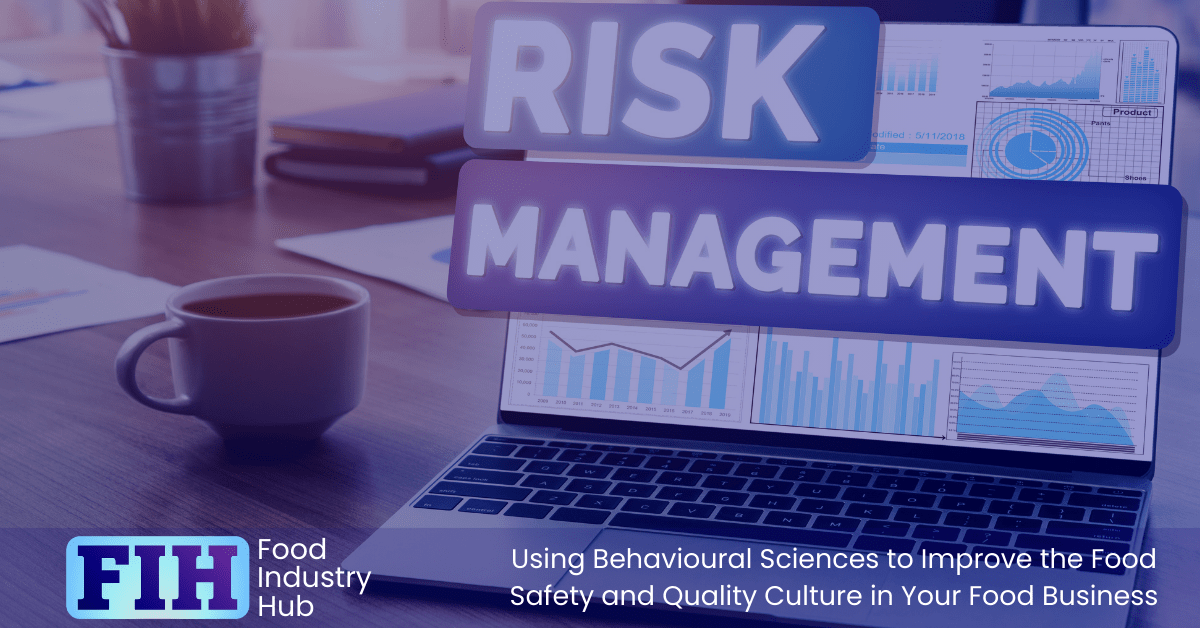
Feedback and Performance Management
We’ll explore the Situation-Behaviour-Impact (SBI) Model and the SMART Goal Setting approach in the context of feedback and performance management.
These methods offer structured frameworks for providing feedback and setting objectives that are specific, measurable, achievable, relevant, and time-bound.
The Situation-Behaviour-Impact (SBI) Model
When utilising the Situation-Behaviour-Impact (SBI) Model, you can effectively receive feedback and enhance your performance through structured evaluation and communication. This model focuses on specific situations, observable behaviours, and the impact these behaviours have on oneself and others. By following the SBI framework, you can provide and receive feedback that’s actionable and constructive.
In the SBI Model, the situation refers to the context or circumstances in which the behaviour occurred. It’s essential to describe the situation objectively to provide clarity and understanding.
The behaviour is the action or response exhibited in the given situation. By pinpointing the behaviour, you can address it directly and discuss its impact.
Lastly, the impact is the result or consequences of the behaviour. Understanding the impact helps in recognising the effects of actions and motivates individuals to adjust their behaviours accordingly.
SMART (Specific, Measurable, Achievable, Relevant, Time-bound) Goal Setting
The implementation of SMART (Specific, Measurable, Achievable, Relevant, Time-bound) goal setting is crucial for effective feedback and performance management in fostering continuous improvement and accountability.
Setting specific goals helps clarify expectations and provides a clear direction for individuals to work towards. By making goals measurable, progress can be tracked, and achievements celebrated.
Ensuring goals are achievable encourages motivation and prevents individuals from feeling overwhelmed. Relevance is key as goals need to align with the overall objectives of the organisation to drive meaningful outcomes.
Time-bound goals create a sense of urgency and help in prioritising tasks effectively. Incorporating SMART criteria into goal setting enhances communication between managers and employees, leading to a more structured feedback process.
It empowers individuals to take ownership of their work and performance, driving a culture of responsibility and excellence. By setting SMART goals, you pave the way for continuous growth and success within your team.
Environment and Design
You should consider how workspace design influences behaviour and decision-making in your food safety and quality culture.
Implementing digital nudges can subtly guide employees towards safer practices and quality standards.
These environmental and design factors play a crucial role in shaping the overall culture within your organisation.
Workspace Design
Optimising workspace design can enhance productivity and foster a culture of food safety and quality within an organisation. The layout and organisation of your workspace play a crucial role in shaping employee behaviour and performance.
Consider implementing visual cues like color-coded zones for different tasks or designated areas for food safety equipment to streamline processes and reinforce best practices.
Ergonomically designed workstations can reduce physical strain and discomfort, leading to fewer errors and improved focus. Ensure that workspaces are well-lit, properly ventilated, and free from clutter to create a conducive environment for employees to adhere to food safety requirements.
Incorporating designated handwashing stations and waste disposal units within easy reach can encourage employees to maintain cleanliness and hygiene standards. Additionally, displaying food safety guidelines prominently in work areas serves as a constant reminder for staff to prioritise safety.
Digital Nudges
Consider leveraging digital nudges in your workspace design to further enhance food safety and quality culture development. Digital nudges are subtle cues or prompts that influence people’s behaviour without restricting their choices.
In the context of food safety and quality culture, digital nudges can be powerful tools to encourage employees to follow best practices and protocols consistently.
For example, implementing digital reminders on screens or devices near workstations can prompt employees to wash their hands regularly or check food temperatures at specific intervals. These nudges serve as gentle reminders and reinforcements of the expected behaviours, ultimately contributing to a culture of vigilance and compliance in food safety and quality management.
Furthermore, digital nudges can be personalised to target specific areas of improvement or reinforce positive actions. Through data analysis and feedback mechanisms, you can tailor digital nudges to address common errors or areas of non-compliance, fostering a continuous learning and improvement environment in your organisation.

In Summary
In conclusion, leveraging insights from behavioural sciences can be very useful for developing a strong culture of food safety and quality within organisations.
Understanding how individuals make decisions, perceive risks, and prioritise rewards can help tailor strategies to address cognitive biases and social influences.
By promoting collective responsibility and emphasising the benefits of adherence to safety protocols, employees can be more committed and engaged in upholding high standards in the workplace.

From The Food Industry Hub Knowledge Centre
Featured pages from The Food Industry Hub Knowledge Centre:
Further Resources
Food Industry Hub serves the food industry with a range of digital resources for the benefit of both commercial food manufacturers and food industry professionals.
For food manufacturers, we offer integrated management systems that give every user a direct interface with your QMS.
For food industry professionals, we provide an extensive signposting service in addition to informational content we hope you’ll find useful as you face new professional challenges. We have very ambitious plans to expand the range of services offered, and currently present informational content on management, safety and quality, food safety and quality culture, and professional success.

